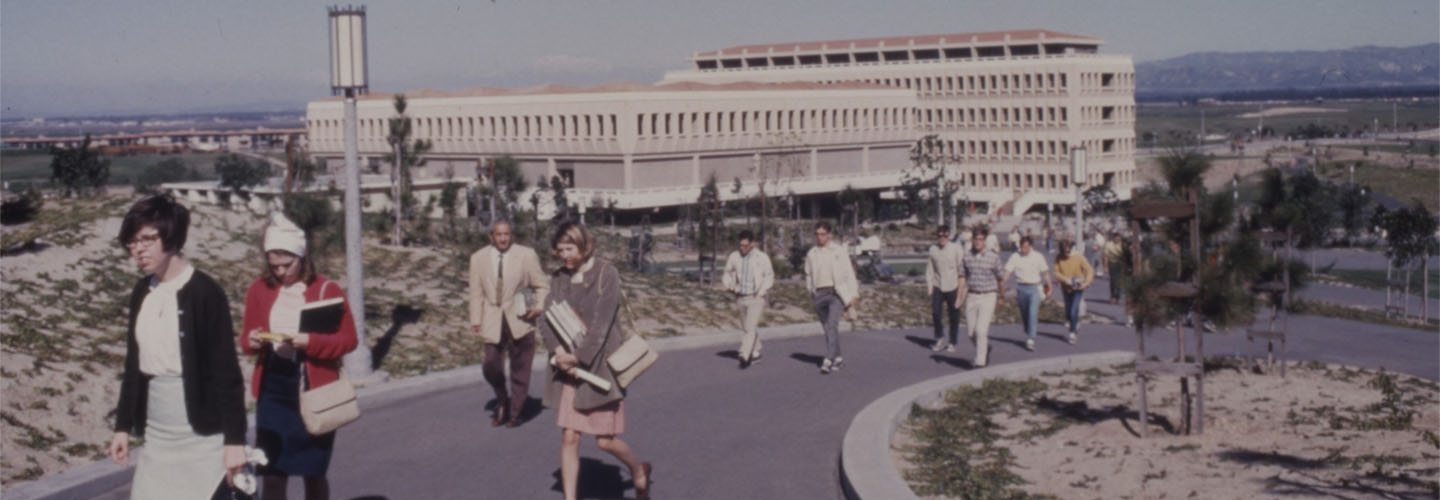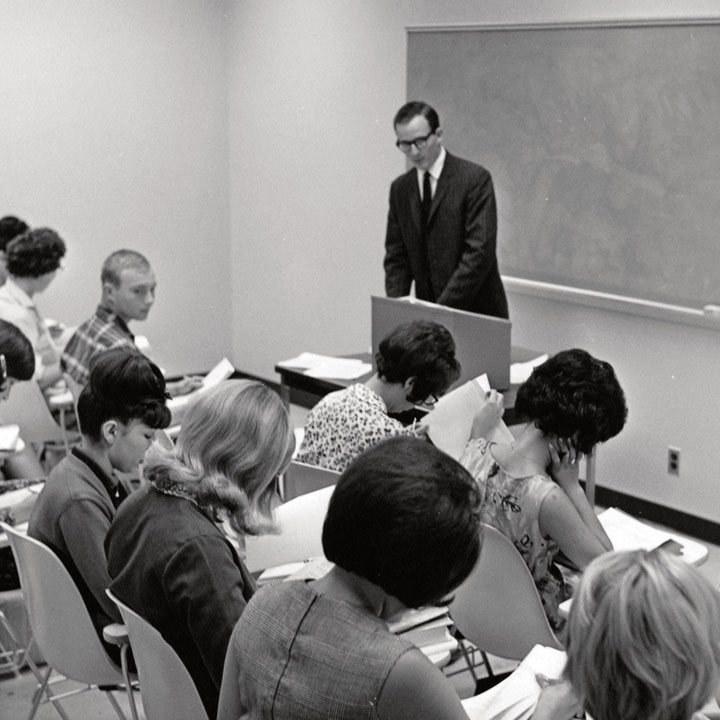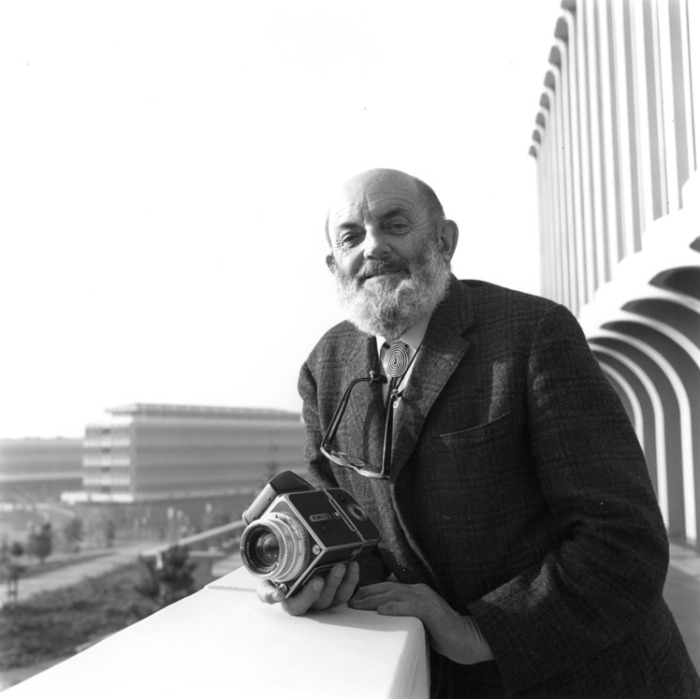
1965-1974
UC Irvine’s first decade brought the Anteater mascot, Ansel Adams photos and new programs.
Milestones
From campus opening and the Anteater mascot to new programs in medicine, writing, social ecology and discovery of CFCs ozone damage.

1965
Campus opens with founding academic divisions of biological sciences, engineering, fine arts, humanities, physical sciences and social science, and graduate school in administration (later management).

1965
The idea for the Anteater mascot came from Pat Glasgow and Bob Ernst, two water polo players, who were inspired by the anteater in the Johnny Hart comic strip “B.C.” The two students, along with the creative marketing genius of fellow student Schuyler Hadley Bassett, organized a campaign for the unusual mascot. The Anteater was elected as the official UCI mascot on Nov. 30, 1965. It received 559 votes, beating out such alternatives as Seahawks, Bison and “none of these.”

1966
In 1966, Ansel Adams visited UC Irvine to photograph its distinctive new buildings as part of a project commissioned by UC President Clark Kerr to celebrate the 100th anniversary of the University of California. Adams took more than 100 photographs of the new Irvine campus. They were published in a commemorative book titled Fiat Lux, after the university’s motto, which means “let there be light.”

1966
Approved as the UCI College of Medicine in 1966, the California College of Medicine was acquired a year later and relocated from Los Angeles to the western edge of campus. Founded in 1896 as the Pacific Sanitarium & School of Osteopathy, the college later became the School of Medicine. Today it houses 26 departments and employs more than 550 faculty members.

1968
UC Irvine’s Department of Information & Computer Sciences was one of the first of its kind in the nation. Founding faculty placed an emphasis on using computers in teaching and instruction, which led to the establishment of the Physics Computer Development Project in 1969. Supported by the National Science Foundation, it identified areas where computers could lead to significant advances in teaching physics. From the beginning, the department was involved in campuswide administration and research. Later, it became the first ICS school in the UC system.

1968
UC Irvine began its creative writing M.F.A. program in 1968. Now widely considered among the nation’s best, it has produced countless successful alumni, including Pulitzer Prize winners Richard Ford ’70, Yusef Komunyakaa ’80 and Michael Chabon ’87.

1970
In 1970, UC Irvine established the first social ecology program in the UC system. Conceived by psychology professor Arnold Binder, the multidisciplinary unit would link intellectuals at the university to recurring problems in the world. Today the School of Social Ecology comprises three departments: criminology, law & society; psychology & social behavior; and planning, policy & design.

1971
From its inception, UCI contributed to the vitality of public schools in Orange County by offering access to educational resources and enhancing the achievement of diverse students. Because of this commitment, UCI established the Office of Teacher Education in 1971. For 20 years, this unit focused on professional preparation and high-quality training for teachers and administrators.

1972
Founded in 1972 by graduate student Marianne McDonald, the Thesaurus Linguae Graecae was the first effort in the humanities to produce a large-scale digital body of literary works. The project has collected and digitized more than 12,000 Greek texts, from Homer to the fall of the Byzantium.

1973
Founding professor and chair of chemistry F. Sherwood Rowland and postdoc research associate Mario Molina were the first to discover that chlorofluorocarbons were depleting the Earth’s ozone layer when released into the atmosphere. The groundbreaking research led to CFC regulation in the United States, in Canada and throughout Scandinavia. In 1995, Rowland, Molina and Paul Crutzen were awarded the Nobel Prize in chemistry. Rowland continued his work on climate change, CFCs and ozone depletion until his death in 2012.
